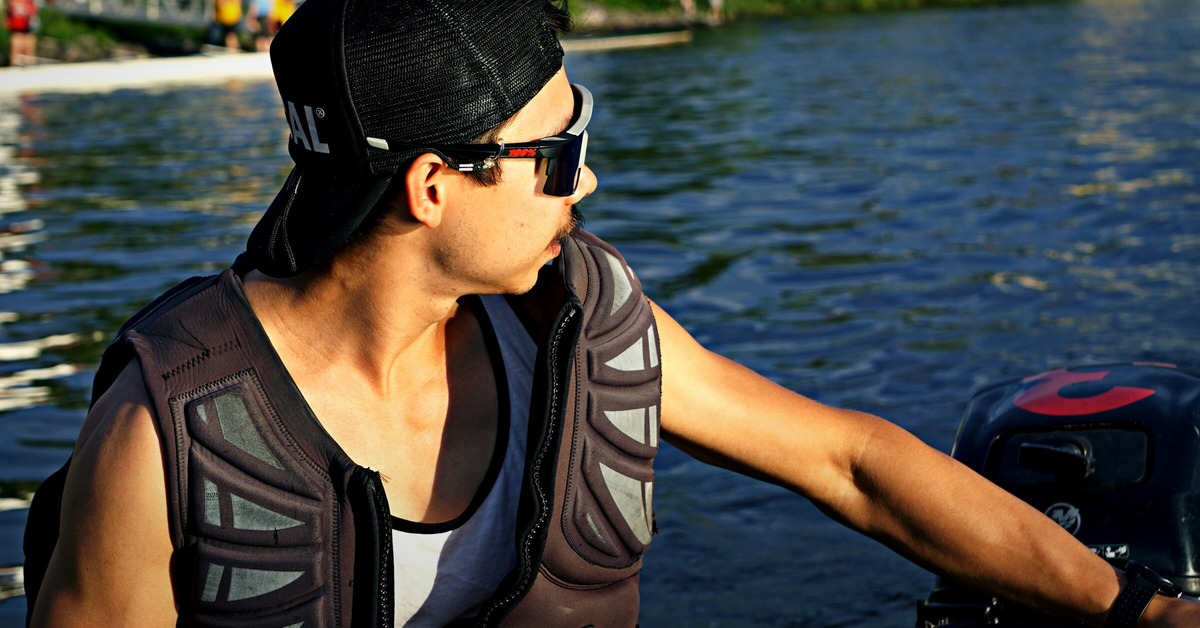Piracy has captured the imagination of people for centuries, from the tales of Blackbeard to the more recent cinematic adventures of Captain Jack Sparrow. Despite this fascination, piracy remains a dark and often misunderstood part of history.
While it’s easy to get lost in the swashbuckling romance and bravado associated with piracy, the reality of life as a pirate was far more complex. In this article, we’ll explore the customs and habits of pirates, from their dress code and accessories to their food and drink, as well as their entertainment and games.
By uncovering the truth about the pirate lifestyle, we hope to gain a better understanding of how this seafaring subculture has influenced modern media and pop culture. So, batten down the hatches and hoist the Jolly Roger, as we embark on a journey to discover the fascinating world of pirates!
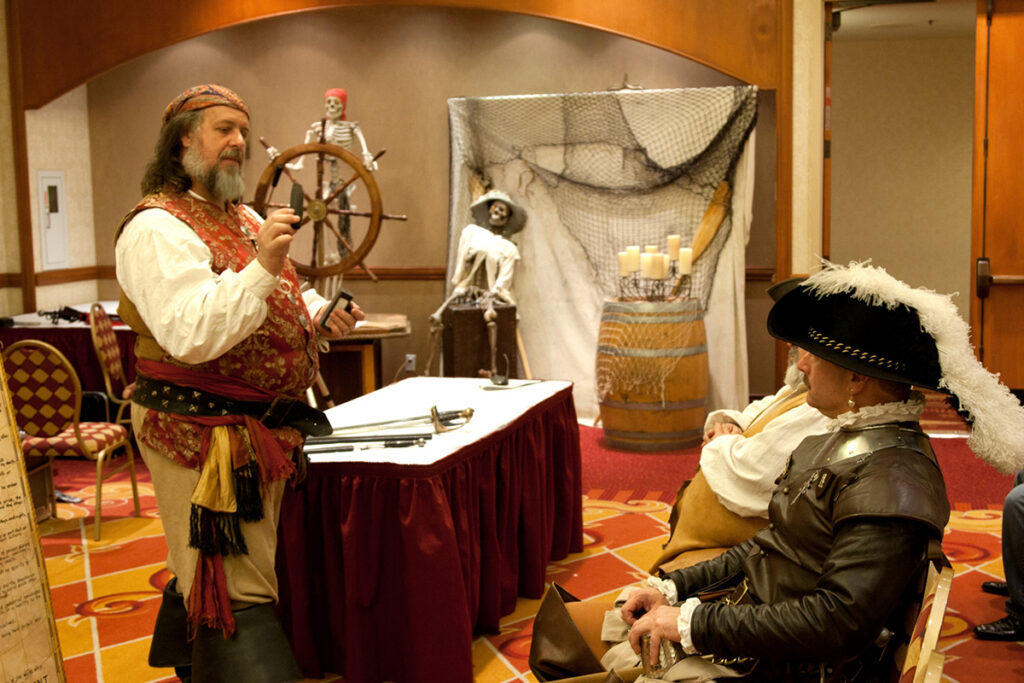
Pirates Dress Code and Accessories
Pirates are known for their distinctive appearance, with eye patches, gold teeth, and parrots perched on their shoulders. But have you ever wondered why they dressed the way they did? In this section, we’ll take a closer look at the dress code and accessories of pirates, from the practical reasons behind their eye patches to the symbolism of their tattoos.
We’ll also explore the question of whether pirates actually wore the stereotypical clothing that we see in movies and popular culture. By delving into the dress code and accessories of pirates, we can gain a better understanding of their lifestyle and the challenges they faced on the high seas.
So, let’s set sail and discover the fashion of the pirate world!
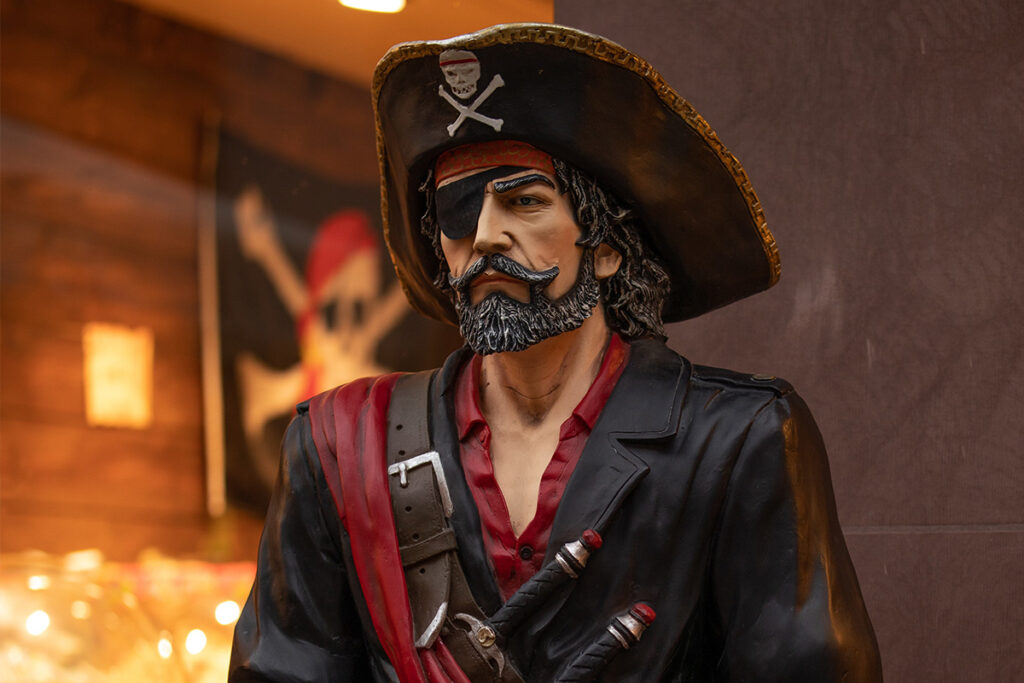
Why Did Pirates Wear Eye Patches?
One of the most enduring images of a pirate is that of a one-eyed buccaneer wearing an eye patch. While this might seem like a stylistic choice, the truth is that pirates wore eye patches for a practical reason.
When a pirate had to move from the bright deck of a ship to the dark below-deck areas, such as the hold or the sleeping quarters, it would take some time for their eyes to adjust to the darkness. By wearing an eye patch over one eye, the pirate could quickly switch it to the other eye when going from light to dark areas.
This allowed them to maintain better vision and awareness of their surroundings, even in low-light conditions. Additionally, if a pirate did lose an eye in battle, wearing an eye patch could also help to protect the injury and prevent further damage.
So, while the image of a one-eyed pirate may be stereotypical, the reason behind the eye patch is a practical one.
Did pirates have gold teeth?
It’s not uncommon to see depictions of pirates with gold teeth in popular culture. However, the reality is that while some pirates may have had gold teeth, it was not a common occurrence.
In fact, the idea of pirates having gold teeth likely comes from the fact that dental care was not readily available during the time of piracy. This led to many pirates losing teeth due to a lack of oral hygiene, poor nutrition, and injuries sustained in battle.
If a pirate did lose a tooth, they might have replaced it with a variety of materials, including gold. While gold was a valuable commodity, it was not practical to use for dental work due to its softness and susceptibility to decay.
So, while some pirates may have had gold teeth, it was not a widespread practice, and certainly not a symbol of wealth or status as it is often portrayed in popular culture.
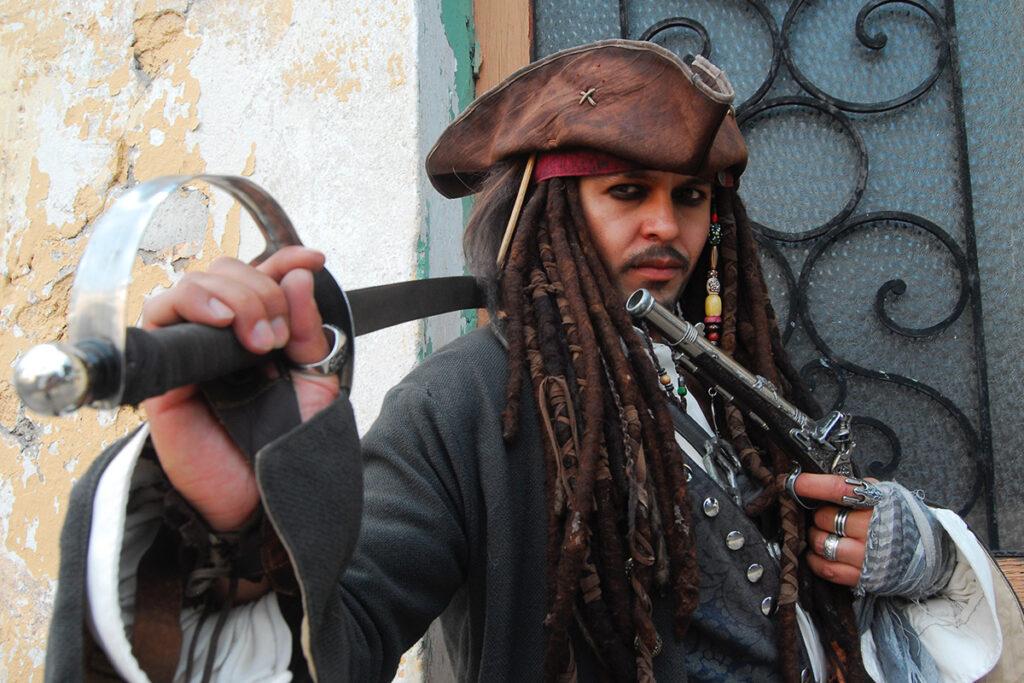
What did pirates wear?
When we think of pirate fashion, we often imagine a swashbuckling rogue in a tricorn hat, a billowy shirt, and a pair of breeches. While this might be a popular image, the reality of pirate fashion was much more diverse and practical.
Pirates wore clothing that was suited to life at sea, with a focus on durability, comfort, and protection from the elements. Clothing was often repurposed or stolen from captured ships, and pirates were known to mix and match styles to create their own unique looks.
Common items of clothing included loose-fitting shirts, trousers or breeches, vests, and jackets. Some pirates also wore bandanas or headscarves to protect their heads from the sun, and boots or shoes with good grip for climbing and maneuvering on board the ship.
Additionally, pirates often carried weapons such as cutlasses, pistols, and daggers, which were not only useful in battle but also served as a symbol of their status and reputation.
So, while pirates may have had a distinctive look, their clothing was largely influenced by practicality rather than fashion trends.
Did pirates have parrots?
The image of a pirate with a colorful parrot perched on their shoulder is a classic trope in popular culture. But did pirates really have parrots as pets or companions? The answer is yes, but it was not as common as you might think.
Parrots were a valuable commodity in the 17th and 18th centuries, as they were exotic creatures that could be sold for a high price. Pirates who captured ships with parrots on board might keep them as pets or sell them for a profit. However, the primary reason that parrots became associated with pirates was their ability to mimic human speech.
Pirates would train parrots to repeat certain phrases or commands, which could be useful during battle or for entertainment purposes. Additionally, the parrot’s presence on board a ship could be a morale booster for the ship crew, as it provided a sense of companionship and familiarity in an otherwise unfamiliar and dangerous environment.
So, while pirates may have had parrots, it was not as common as popular culture would have us believe, and their role on board a ship was largely practical rather than purely decorative.
Did pirates have tattoos?
Tattoos have a long history of association with sailors and seafarers, and pirates were no exception. While there is no definitive evidence to suggest that pirates commonly had tattoos, it is likely that some did.
Tattoos were a popular form of self-expression and identification among sailors, and pirates were often former sailors who had spent many years at sea. Tattoos were also used as a way to signify membership in a particular crew or to display allegiance to a particular pirate captain. However, tattoos were not as prevalent during the Golden Age of Piracy as they are today, and it’s difficult to say for sure how common they were among pirates.
Some pirate accounts from the time do mention tattoos, but these accounts are few and far between. Additionally, tattoos were often seen as a sign of criminality and were associated with the underworld, so it’s possible that pirates may have been hesitant to get tattoos for fear of being seen as outlaws or troublemakers.
In any case, while there is no concrete evidence to suggest that pirates commonly had tattoos, it is certainly possible that some did, and that tattoos played a role in pirate culture and identity.
Pirate Food and Drink
Piracy is often romanticized in popular culture as a life of adventure and freedom on the high seas. However, the reality of life as a pirate was often harsh and unforgiving, with long hours of hard work and little comfort or luxury.
One of the most important aspects of pirate life was food and drink, which was not only essential for survival but also played a significant role in shaping pirate culture and traditions.
In this section, we will explore the types of food and drink that pirates consumed, as well as the cultural significance of these items. From rum to hardtack, the food and drink of pirates offers a fascinating glimpse into the realities of life at sea during the Golden Age of Piracy.
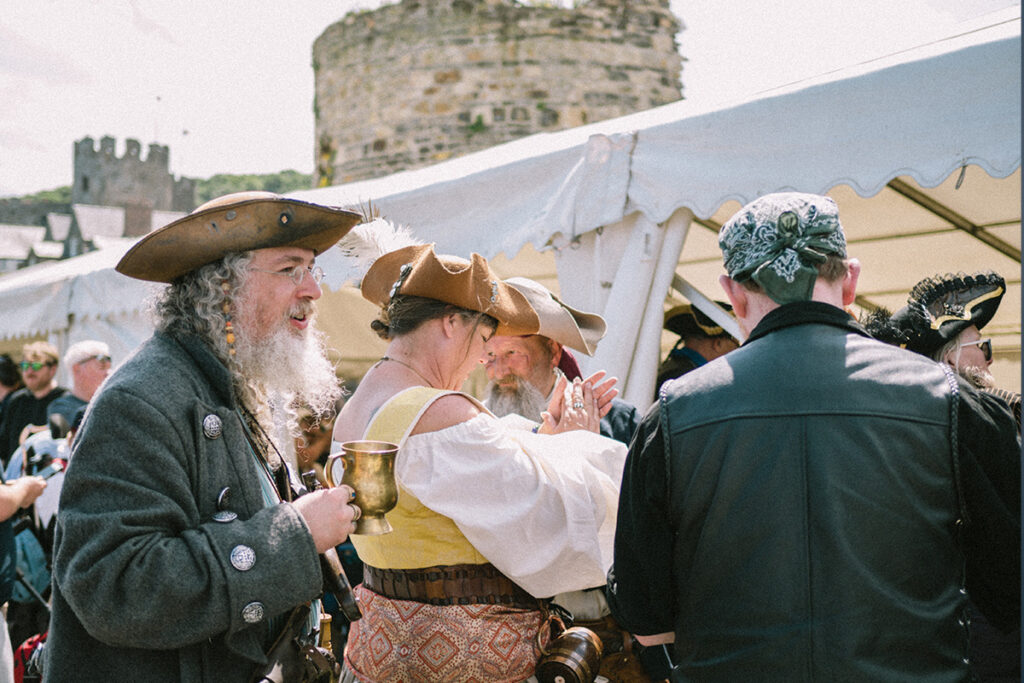
What Did Pirates Eat?
Life as a pirate was often characterized by long periods of time at sea, with limited access to fresh food and supplies. As a result, pirates had to rely on non-perishable foods that could be stored for long periods of time without spoiling.
One of the most important staples of the pirate diet was hardtack, a type of hard, dry biscuit made from flour and water. Hardtack was cheap, easy to store, and could last for months without going bad, making it an ideal food for pirates on long voyages. Pirates also ate a variety of canned goods, such as beans, peas, and meats, which were similarly easy to store and had a long shelf life.
In addition to these basic staples, pirates would also supplement their diets with fresh fruits and vegetables whenever possible. This was especially important in the early stages of a voyage, when fresh food was still available.
Pirates would also catch and eat fish and other seafood, which provided a much-needed source of protein and other essential nutrients. However, fresh food was often in short supply on pirate ships, and many pirates suffered from malnutrition and other health problems as a result.
Overall, the pirate diet was not particularly varied or nutritious, but it provided enough sustenance to keep pirates alive during their long voyages. Hardtack and canned goods were the most common foods consumed by pirates, with fresh fruits, vegetables, and seafood added when available. Despite the limitations of their diet, pirates were known for their hearty appetites and ability to make the most of what little food they had.

Why Did Pirates Drink Rum?
Rum is often associated with pirates, and for good reason. Pirates were known to consume large quantities of rum, which was readily available in the Caribbean, where many pirates operated. But why did pirates prefer rum over other types of alcohol?
One reason is that rum was cheap and widely available. It was produced in large quantities in the Caribbean, where many pirates made their base of operations. This meant that rum was often easier to obtain than other types of alcohol, such as wine or beer, which had to be imported from Europe. Additionally, rum could be easily stored on board ships without spoiling, making it a practical choice for long voyages.
Another reason why pirates drank rum was its perceived medicinal properties. Rum was often used to treat a variety of ailments, including scurvy, a common disease among sailors caused by a lack of vitamin C. Pirates believed that rum could help prevent scurvy and other illnesses, and would often drink it in large quantities as a preventative measure.
Finally, rum was a popular choice for pirates because it was a strong, high-proof alcohol that could help to numb the pain of injuries sustained in battle. Pirates were often involved in violent conflicts with other ships and would consume rum before and after battles to help deal with the physical and emotional toll of these encounters.
In short, pirates drank rum because it was cheap, widely available, had medicinal properties, and could help to dull the pain of injuries sustained in battle. While rum may have been a practical choice for pirates, it also became an important part of pirate culture and lore and is still associated with piracy to this day.
Pirate Entertainments
Life as a pirate was not all about raiding ships and searching for treasure. In their free time, pirates would often engage in a variety of entertainments and pastimes to pass the time and keep themselves occupied during long voyages.
These activities ranged from simple card games and dice games to more elaborate forms of entertainment, such as music, dance, and storytelling. In this section, we will explore some of the most popular forms of entertainment among pirates, and examine how these activities helped to shape the culture and identity of the pirate community.
What Games Did Pirates Play?
Pirates had to deal with long stretches of downtime between raids and battles, so it’s no surprise that they had plenty of games and pastimes to keep themselves entertained. These games ranged from simple games of chance to more complex strategy games and provided a way for pirates to bond with one another and alleviate the boredom and stress of life on the high seas.
One popular game among pirates was dice, which could be played with nothing more than a handful of dice and a flat surface. Pirates would often wager their hard-earned booty on the outcome of the game, making it a high-stakes form of entertainment. Another popular game was cards, with poker being a particular favorite among pirates.
In addition to games of chance, pirates also engaged in more physical forms of entertainment, such as sword fighting and wrestling. These activities helped pirates to stay in shape and hone their combat skills, while also providing a way for them to blow off steam and engage in friendly competition.
Finally, music and storytelling were also important forms of entertainment for pirates. Many pirates were skilled musicians and would play instruments such as the fiddle and the accordion to pass the time and entertain their shipmates. Storytelling was also a popular pastime, with pirates sharing tales of adventure, treasure, and intrigue around the campfire or in the ship’s hold.
In short, pirates played a wide variety of games and engaged in many different forms of entertainment to pass the time and keep themselves occupied. These activities helped to strengthen the bonds between pirates and create a sense of community and camaraderie, which was essential to their survival on the high seas.
How Did Pirates Name Their Ships?
Naming a ship was an important tradition among pirates, and the names they chose often reflected their values, beliefs, and personalities. Pirates were known for choosing names that were both memorable and intimidating, designed to strike fear into the hearts of their enemies and leave a lasting impression on those who encountered them.
Many pirates chose names that reflected their fearsome reputation, such as Blackbeard, who named his flagship the Queen Anne’s Revenge, or Calico Jack Rackham, who sailed on a ship named the Revenge. Other pirates chose names that reflected their love of wealth and treasure, such as Henry Morgan, who sailed on a ship named the Satisfaction.
In some cases, pirates also chose names that reflected their allegiance to a particular country or cause. For example, some pirates who were former privateers or naval officers would name their ships after famous figures or events from their country’s history, such as the Royal James or the Victory.
Finally, some pirates would choose humorous or ironic names for their ships, such as the Whydah, which was named after a bird that was said to cry out “Why-dah” when it was captured, or the Fancy, which was anything but fancy in its appearance or equipment.
Overall, the naming of a pirate ship was an important part of pirate culture, and the names they chose often had deep symbolic meaning and reflected the values and beliefs of the pirate crew.
Conclusion About Pirates Habits
Piracy has been a popular subject of fascination in popular culture for centuries, with countless movies, books, and television shows dedicated to the subject. But how much do we really know about these legendary figures of the high seas? In this article, we’ve explored some of the most intriguing questions about pirate life, from their dress code and accessories to their food and drink, entertainment, and ship-naming traditions.
We’ve learned that pirates were a diverse group of individuals who often used their dress and appearance to intimidate their enemies. They wore eye patches to maintain their night vision and gold teeth as a symbol of wealth and power. They also often had tattoos and kept parrots as pets.
In terms of food and drink, pirates had to be resourceful and make do with whatever was available. They ate a diet consisting mainly of hardtack, salted meat, and beans, and drank rum for its intoxicating effects and ability to mask the taste of unclean water.
Pirates were also known for their love of games and entertainment, and they often passed the time playing cards or engaging in mock battles. They named their ships after a variety of themes, ranging from fearsome animals to famous figures in history.
Finally, we reflected on how the pirate culture has influenced modern media and pop culture, with countless movies, books, and television shows dedicated to the subject. Pirates continue to capture our imaginations with their daring exploits, colorful personalities, and enduring sense of adventure.
In conclusion, pirates were more than just ruthless criminals of the high seas. They were a complex and diverse group of individuals who left an indelible mark on history and continue to captivate our imaginations today. The questions we discussed are from the echo from the Golden Age of Piracy, today pirates still exist and remain a big problem and threat for mariners worldwide!
- LNG vs. LPG: A Comprehensive Guide to the Difference between LNG and LPG – November 5, 2024
- Cargo Handling Systems and Equipment on Oil Tankers – November 5, 2024
- What is Ship Tonnage? All Types and Use Explained! – October 30, 2024


